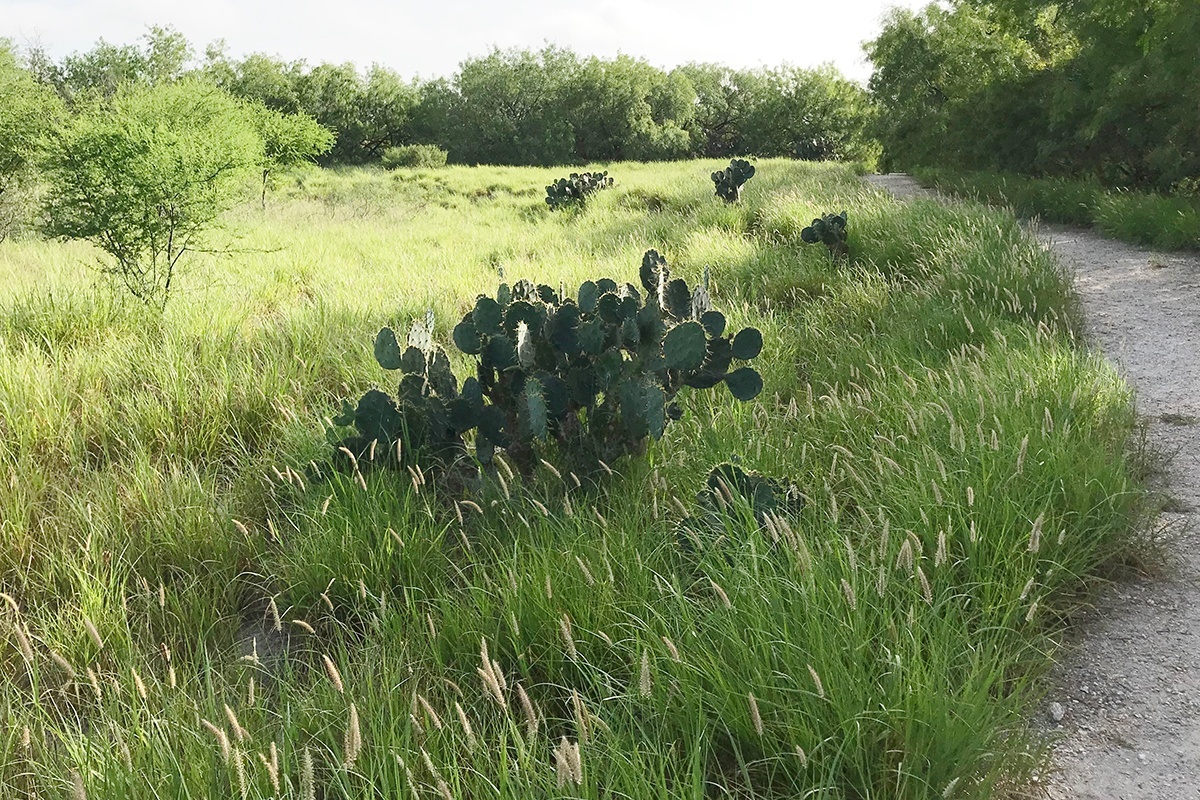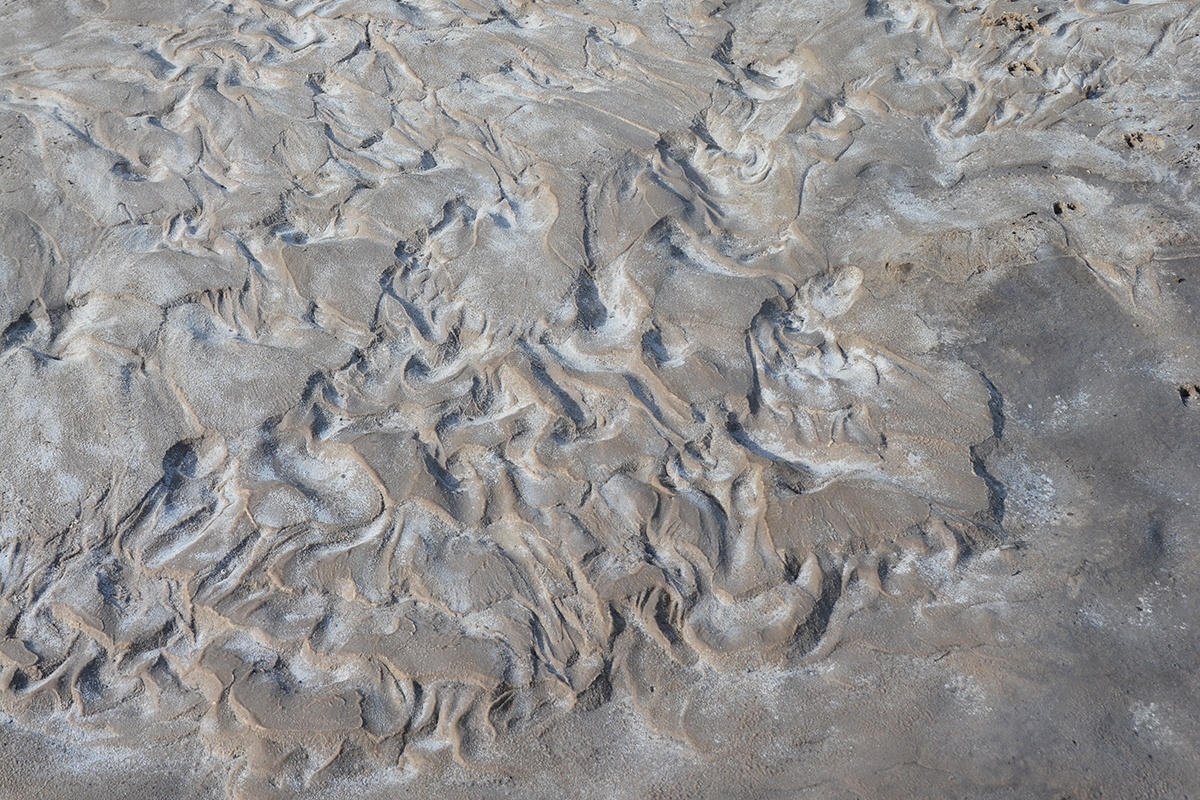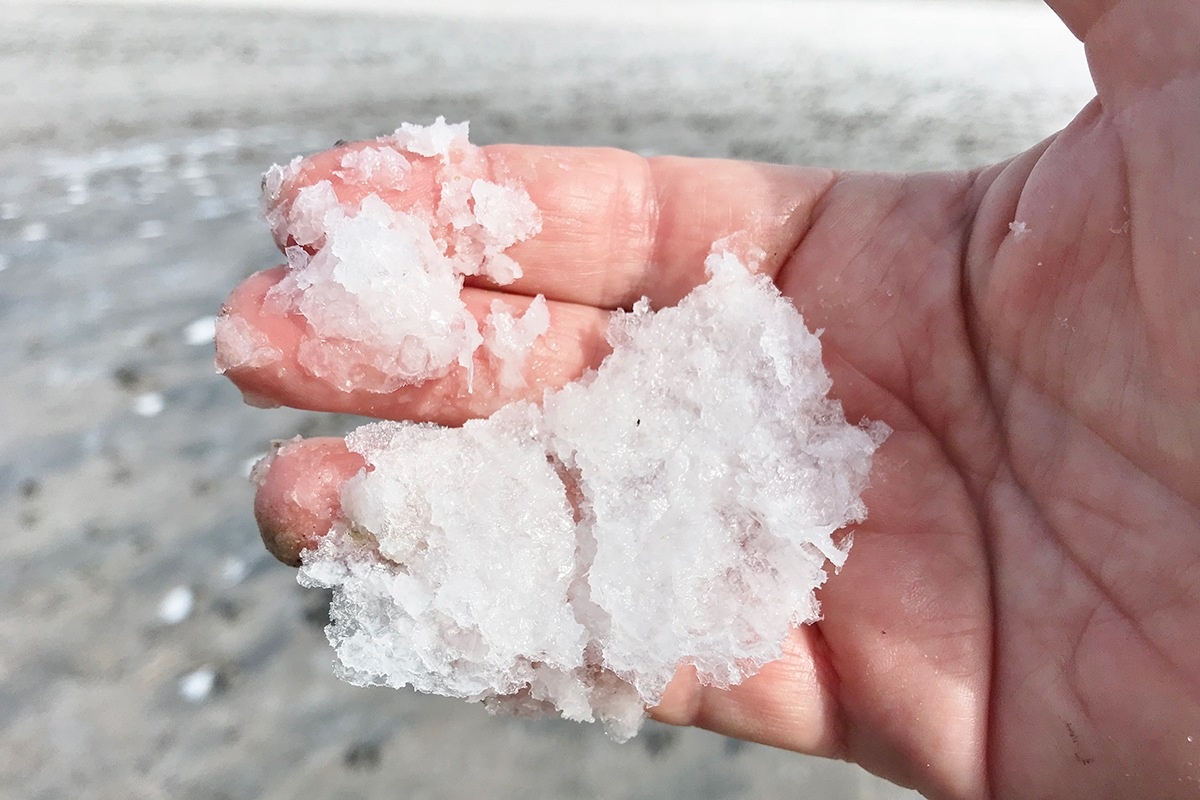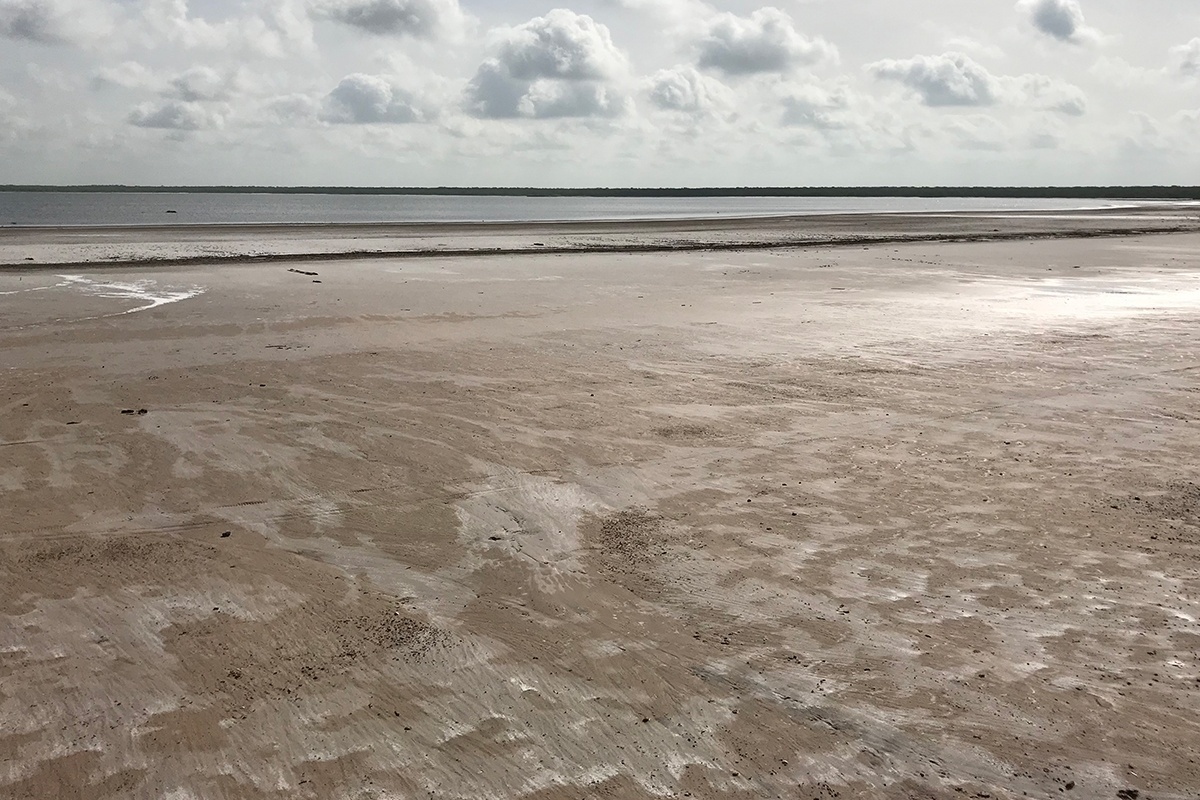Three glistening white hypersaline lakes sit north of Highway 186, between Raymondville and San Manuel/Linn. In my opinion, they are the Valley’s most exotic place to visit. Why? Huge expanses of salt that look like snow are surrounded by mesquite and cactus. Wildlife is abundant. I’ve spotted javelinas on almost every visit to the lakes. The salt lakes’ early history is written in the ancient salt wagon trails leading into Mexico and to the coast. Indians, explorers, ranchers and soldiers all valued the shimmering lakes which are listed on the National Register of Historic Places.

Anita Westervelt
The most accessible lake is the 530-acre La Sal del Rey, which is the top of a salt dome containing an estimated four million tons of salt. The sodium chloride continually rises to the surface as salt blocks are removed. Near La Sal del Rey’s entrance and parking lot, about five miles east of I-69C, a historical marker states that in 1746 Spanish adventurers came upon a huge salt lake and claimed it for the king -La Sal del Rey – because all minerals belonged to the monarch.
Today, the salt lakes are part of USFWS’s Lower Rio Grande Valley Wildlife Corridor and a magnet for migratory and wintering birds: snow geese, sandhill cranes, long-billed curlews. A wide caliche trail wanders over a half mile over the 5,900-acre tract past ebony, texas persimmon and native wildflowers to the lake bed.
On a recent visit after rainy days, a white glaze of salt had formed on top of the wind-sculpted mud flats around the shallow lake. The sun shining on the salt made it seem like a glitter factory had exploded. I heard the salt crackling with each step I took. Salty water rose into my footprints, where it would begin drying into salt flakes. My footprints joined those of the abundant wildlife that frequent this giant salt lick. Javelina, nilgai, bobcat, deer and shore birds had left their marks.

Anita Westervelt
Go ahead and taste some clean salt formed in a hoof print. This is millions of years old sea salt formed when the Valley was beneath the ocean. Be aware that shiny, salt-covered balls on the surface are usually nilgai poop.
Set in a slight depression, the lake is an oasis of peace and quiet, broken only by calls of golden fronted woodpeckers, white-winged doves and killdeer. Queen butterflies and copper colored dragonflies drifted overhead. In drier months, I’ve seen the lake tinted pink by algae-eating brine shrimp that attract shorebirds.
I talked to Alvarez family of Weslaco, who were on their first trip to the salt lake. They were enjoying that it looked different than the rest of the Valley.

Anita Westervelt
The late Elouise Cheney Campbell, whose family owned La Sal del Rey until the 1990s, told me: “I could imagine conquistadores coming out of the brush and seeing this huge white lake and thinking it was snow.” She remembered that “farmers would lay planks out into lake and use hoes to cut out blocks. Then they would put it in wood boxes strapped to burros.” Later on ice cream factories would buy the salt, and oil companies would use the brine for drilling mud.
“If you leave a piece of wood or anything in the lake, it will be covered with salt,” Campbell recalled. People would throw branches into the lake and retrieve them in a week or two for Christmas decorations. “They would be covered with salt and would shine.” She knew a judge’s wife who “would go lie down in it and soak for her rheumatism.”
During the Civil War, the “first military objective” of the Union Army when landed at Brazos Santiago was to seize the salt works at La Sal del Rey. The confederacy had a critical shortage of salt to preserve meats.

Anita Westervelt
When you go, wear rain boots or sneakers you don’t mind getting muddy. Carry water. Go when it hasn’t rained for a month or so to get the best impact of acres of white salt. My round-trip hike with a lot of wandering took two hours. An alternative entry is up Brushline Road, which brings you to the northeast corner of the lake and a fresh water spring. The 750-acre East Lake is west of Raymondville. La Sal Vieja at 1674 acres is the largest lake with an island in the middle, but it is the least accessible.


